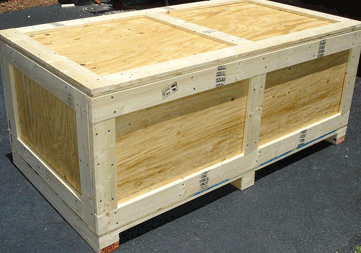How to Build a Crate
Overview
 In our experience of today’s business environment, credits are often issued by manufacturers because the product received was damaged due to insufficient or inappropriate shipping containers. These situations can become very costly because you not only lose the cost of the packaging, you may also lose all or some of the product. And if you want product returned, the freight coming back is an additional expense.
In our experience of today’s business environment, credits are often issued by manufacturers because the product received was damaged due to insufficient or inappropriate shipping containers. These situations can become very costly because you not only lose the cost of the packaging, you may also lose all or some of the product. And if you want product returned, the freight coming back is an additional expense.
When it comes to making a crate in-house, plywood is usually near the top of the list. It has the ability to hold up in all weather conditions; it can have excellent stacking abilities; it has great durability and life expectancy; and it is the simplest and quickest to make up. The biggest issue with plywood crates is that they need to be made up internally (or locally) so that the freight to get the product doesn’t cost you more than the crates themselves. Making them in-house means an increase in labor and overhead. In addition, most of the plywood material you are making them from is a commodity building product. This causes the cost to fluctuate dramatically with the lumber market.
You've probably already contacted a crating company, and are astounded how much it costs to have something crated for shipping. Its way more cost effective and really not that difficult to make your own crate... which is key if you will need to reuse the crate, as it can be easily assembled and dis-assembled. The materials are relatively cheap and accessible. If you have some basic building skills, know how to use a cordless drill, and have access to a chop saw and table saw, its definitely worth it to just do it yourself.